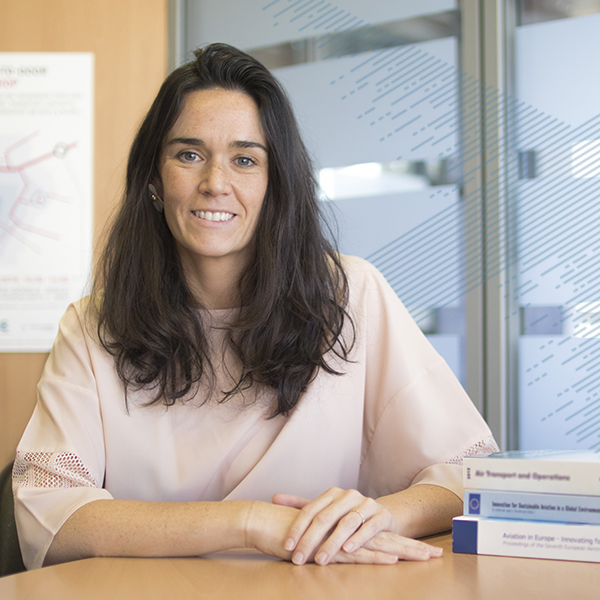
There is growing pressure on the ATM system to become more cost efficient and at the same time manage traffic that is set to become more complex and diversified. All the while maintaining or even enhancing the already high levels of safety! This sounds like a bit of conundrum, but it is one that can be solved with the help of artificial intelligence, explains Paula López-Catalá from Innaxis Research Institute from the recently started SafeOPs project.
SafeOps is about ensuring safe operations in ATM, enabled by AI. Why is that necessary?
Machine learning technologies have the ability to analyse vast amounts of diverse data (usually coming from different sources) to extract patterns. This hidden knowledge can be used to identify/predict safety risks or performance inefficiencies and, in doing so, offer support to controllers in their decision-making. By processing years of operational data (i.e. years of practice), AI can also support controllers’ training needs and subsequent performance in the operational room. It is against this backdrop that SafeOPS is investigating how to integrate data-driven and automation-based decision intelligence into the current ATM system.
What are the challenges with introducing AI into the system?
There are some challenges to introducing AI but also lots of opportunities:
- ANSPs: There is a mismatch between the long innovation cycle for current ATC systems and AI technologies which are more agile and quicker to implement. But once ANSPs take the plunge with AI technology, they will gain the necessary experience in automation to address more complex challenges and increase their cost efficiency.
- Regulators and certification: The aviation industry is already pushing for having the first AI-based system approved for operations in less than a decade. The demand of the manufacturers to offer different machine learning solutions that enable more cost-efficient flights is more relevant than ever in this post-COVID era. EASA has already published a first roadmap for AI solutions including tentative certification milestones.
- Air traffic controllers: For end users, it is very important to understand how new technology fits into existing processes and make them part of the solution in case those processes needed to be changed. Specific training will be needed in how to interact with AI based predictive technologies, how to incorporate its associated uncertainty into operations and how to better present the information to them. Users are a key to the successful implementation of AI.
How does the project aim to address these issues?
The key is to bring together the machine learning experts and the ATM and airline operational staff and domain experts to address together the human factors associated with AI. In doing so, they work together to identify possible hidden safety risks and define operational problems. In the long run this approach facilitates the adoption of the technologies and higher levels of automation by the end users. The ATM human agents will have to adapt to receiving more information from big data analytics, precise but expressed in probabilistic terms. Clever HMI refinements will certainly help to mitigate the potential overflow of information. However, also research on the impact of information automation on the ATM system needs to be conducted.
Is there a specific application of AI that the project is focusing on?
SafeOPS will focus its research on go-around forecasting. Initiated by the pilot or air traffic control, go-arounds are aborted landings by aircraft on the final approach. These occur on average 1-3 times for every 1,000 approach. Even though performing a go-around is encouraged in situations deemed “unstable”, one in ten go-around reports still show potential safety risks. The project will look at the processes behind go-arounds today, the probabilistic data available and the potential value of a decision-making support tool and impact on the safety and resilience of the system.
How will you test your research/solution? Could it be commercialised? Do you foresee industry taking up this concept and integrating it into their systems/operations. If so, how?
Yes, several ANSPs are asking for greater flexibility in technology architectures and AI will be a key piece of the next generation of systems and critical for increased efficiency and safety improvements in the operational room. SafeOPS aims at demonstrating the feasibility of these technologies from a technical perspective in cooperation with the operational experts. Ultimately, we have to be sure that the solution developed responds to a real operational problem and matches the requirements and needs of the users, paving the way towards a future implementation.
SafeOPS consortium (TU Munich, Innaxis, DFS, Iberia, Pegasus and DeepBlue) is committed to fully align this initial research to enable its future adoption while, in parallel, significant progress in certification of AI technologies would be required from authorities.
